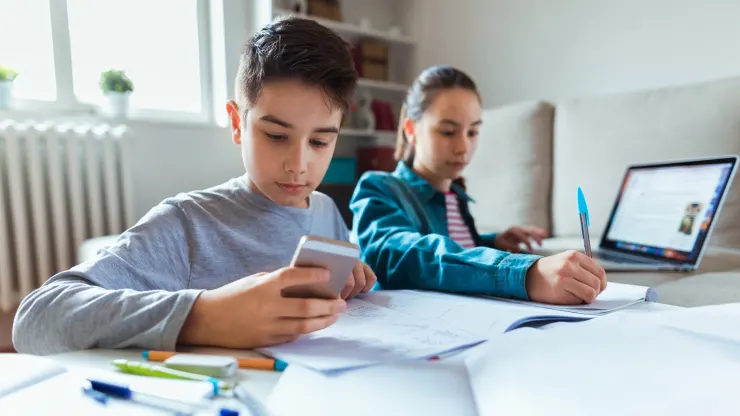SAN FRANCISCO — Teachers across the United States are expressing concerns about the extent to which students use smartphones during class time, engaging in activities such as watching Netflix, gambling apps, sending Snapchat messages, listening to music, and online shopping. While the pervasive influence of phones on American adolescents is well-documented, many parents remain unaware of the extent of their children’s smartphone use in the classroom. Consequently, educators and experts are increasingly unified in their stance on how to address the issue: implement cellphone bans during class.
James Granger, a science teacher at a high school in the Los Angeles area, has taken a proactive approach. He requires students to place their phones in a designated cubby with numbered slots, referred to as “a cellphone cubby,” during his classes. Granger believes that physically removing cellphones from students is the only effective solution, as the understanding that phones should not be used during class no longer holds true.
While most schools already have rules regarding student cellphone use, enforcement of these rules is often sporadic. However, an increasing number of leaders at the state and federal levels are endorsing cellphone bans in schools and proposing new measures to limit access to these devices.
Utah recently became the latest state to intervene in this issue. Governor Spencer Cox, a Republican, called on all school districts and the state Board of Education to remove cellphones from classrooms. Cox cited studies that demonstrate improved learning outcomes, reduced distractions, and increased student interaction when phones are not present.
“We just need a space for six or seven hours a day where kids are not tethered to these devices,” Cox stated. His initiative, though non-binding, aligns with a legislative push to protect Utah’s children from the negative impacts of social media.
Florida was the first state to take action against phones in schools, passing a law last year that bans student cellphone use during class time in all public schools and blocks access to social media on district Wi-Fi. Some districts, such as Orange County Public Schools, went even further and banned phones for the entire school day. Similar “phone-free schools” legislation has also been introduced in Oklahoma, Vermont, and Kansas.
At the federal level, Senators Tom Cotton, an Arkansas Republican, and Tim Kaine, a Virginia Democrat, introduced legislation in December calling for a federal study on the effects of cellphone use in schools on students’ mental health and academic performance. This bipartisan effort is part of a broader movement advocating for stricter regulations on social media companies and enhanced online safety for children.
According to the National Center for Education Statistics, 77% of U.S. schools claim to prohibit cellphone use for non-academic purposes. However, this statistic can be misleading, as it does not guarantee compliance or consistent enforcement.
Teachers on the front lines of this issue attest to the challenges they face in controlling cellphone use. Patrick Truman, a high school teacher in Maryland, acknowledges that cellphone use is out of control, and even with policies in place, he struggles to enforce them. Truman has resorted to purchasing a 36-slot caddy to store student phones, but many students still manage to hide their phones and engage in gaming and social media during class time.
To effectively implement a school cellphone ban, educators and experts emphasize the importance of school administration taking the lead in enforcement, rather than placing the burden solely on teachers. The Phone-Free Schools Movement, an advocacy group established by concerned mothers, argues that policies allowing students to keep phones in their backpacks are ineffective. Instead, the group advises schools to require phones to be turned off and locked away for the duration of the school day.
Critics of cellphone bans argue that such policies infringe upon students’ autonomy and sever their primary mode of communication with family and friends. Some parents also express concerns about being unable to reach their children in case of emergencies. The Phone-Free Schools Movement suggests making exceptions for students with special educational and medical needs and educating parents about the dangers of phones as distractions during emergencies.
While there may be resistance, many students are beginning to recognize the benefits of turning in their phones at school. At Delta High School in rural Utah, where phones are required to be checked at the door, students have noticed improved focus and increased engagement in class. They appreciate the opportunity to take a break from screens and social media and interact with others in person.
Jared Christensen, the vice principal of Delta High School, emphasizes the positive impact of their cellphone policy. He notes that student attentiveness and engagement have improved, and test scores have reached or exceeded state averages for the first time in years. The school plans to address the use of earbuds and smartwatches next, as students have been found using them to listen to music during class.
As the issue of cellphone distraction in schools gains more attention, the implementation of cellphone bans appears to be a growing trend across the country. The hope is that these measures will create a conducive learning environment and foster increased student engagement and academic performance.
